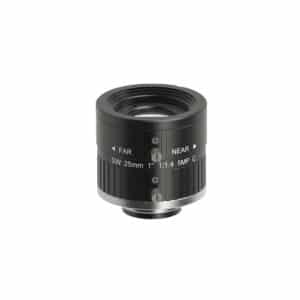Wavelength Infrared Lenses in Imaging Technology

Wavelength Infrared Lenses in Imaging Technology
In the intricate realm of imaging technology, the pursuit of unparalleled clarity and precision is an ongoing journey. Wavelength Infrared (IR) lenses and Telecentric camera lenses are means of achieving these goals, each bringing unique capabilities to the forefront of optical innovation.
Wavelength Infrared Lenses: Unveiling the Invisible Spectrum
Playing a pivotal role in capturing the unseen by operating beyond the visible light spectrum, Wavelength Infrared lenses in Imaging Technologyare designed to capture infrared radiation, revealing details that are invisible to the human eye. Commonly used in applications like night vision, surveillance, and scientific research, Wavelength Infrared Lenses offer a unique perspective by highlighting heat signatures and providing crucial data in various industries.
The significance of these lenses extends to fields such as medicine, where thermal imaging helps diagnose ailments, and in security systems, where infrared vision enhances surveillance capabilities. Wavelength Infrared Lenses in Imaging Technology are indispensable tools in cutting-edge imaging technologies.
Telecentric Camera Lenses: Precision in Every Pixel
Telecentric camera lenses, on the other hand, are celebrated for their precision and accuracy in capturing images. Unlike conventional lenses, telecentric optics ensures that rays of light are parallel to the optical axis, resulting in consistent magnification across the entire field of view. This unique characteristic eliminates perspective errors and guarantees accurate measurements, making telecentric camera lenses ideal for applications such as metrology, machine vision, automotive and industrial inspection.
The precise imaging capabilities of telecentric lenses contribute to enhanced quality control processes, where accurate measurement of objects is crucial. Whether in manufacturing or medical imaging, the telecentric design ensures that every pixel is a faithful representation of the subject, fostering reliability in critical visual analysis. The diversity and depth of modern imaging technology enables superior perspective and accurate measurement for analyzing the object’s dimensions.
Related Posts
Optical Solutions for Tomorrow: Exploring Optical Engineering Services" rel="bookmark">Optical Solutions for Tomorrow: Exploring Optical Engineering Services
How useful was this post? Click on a star to rate it! Submit Rating As you found this post useful......
What are Eyepiece Lenses? Usages, Benefits, and Types" rel="bookmark">What are Eyepiece Lenses? Usages, Benefits, and Types
Eyepiece lenses, also known as ocular lenses, are image-magnifying lenses. It gives high resolution...




